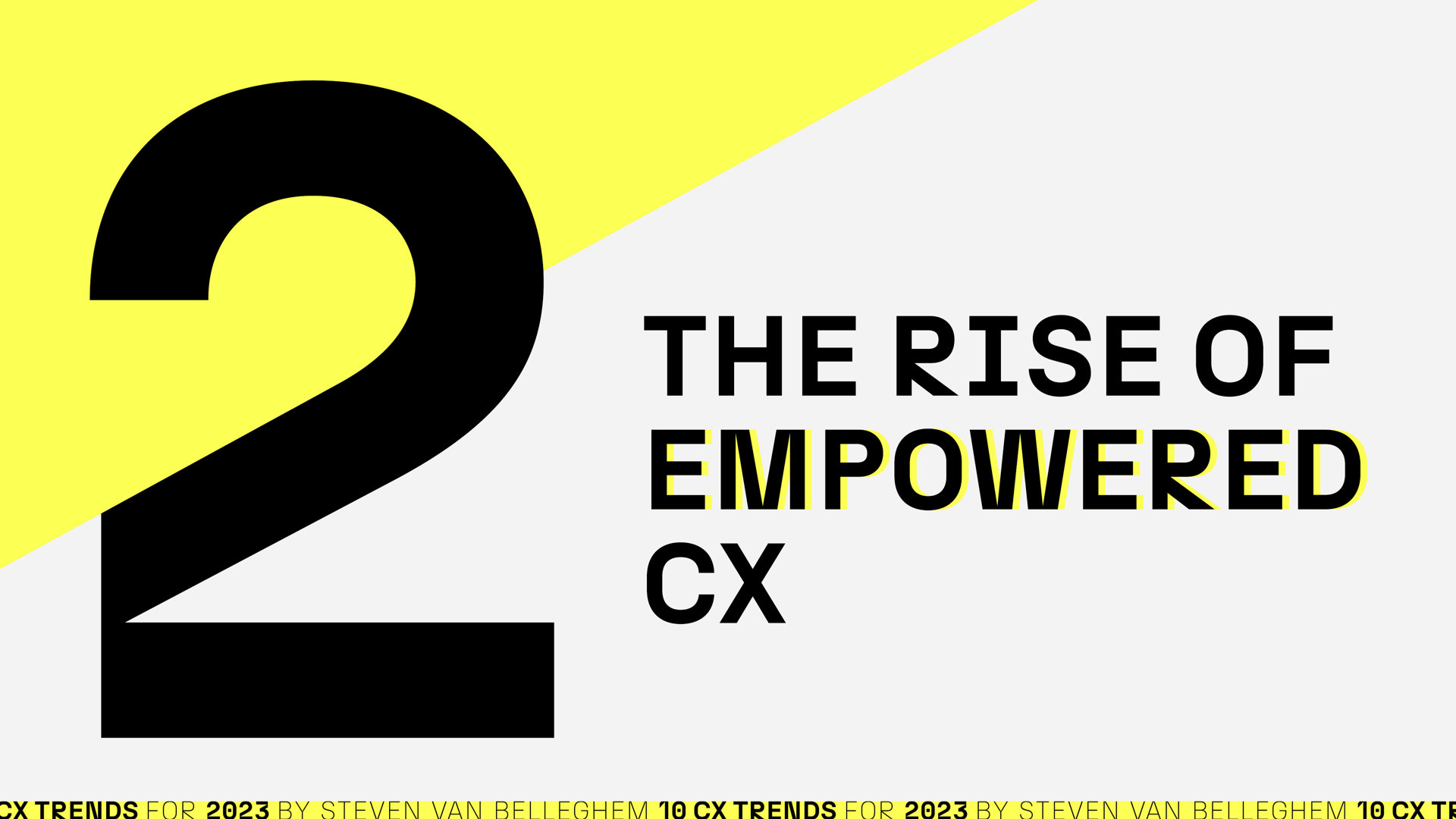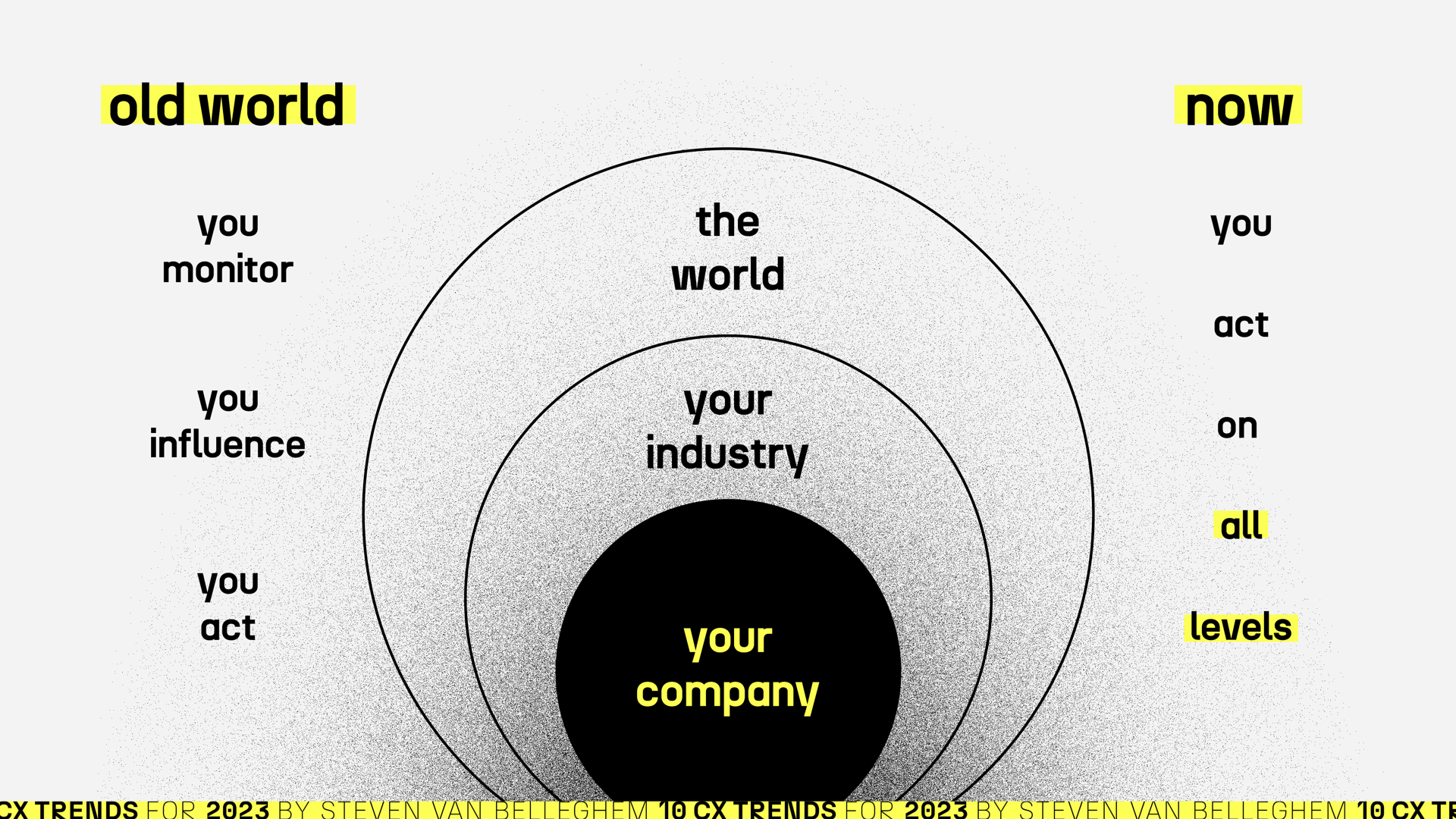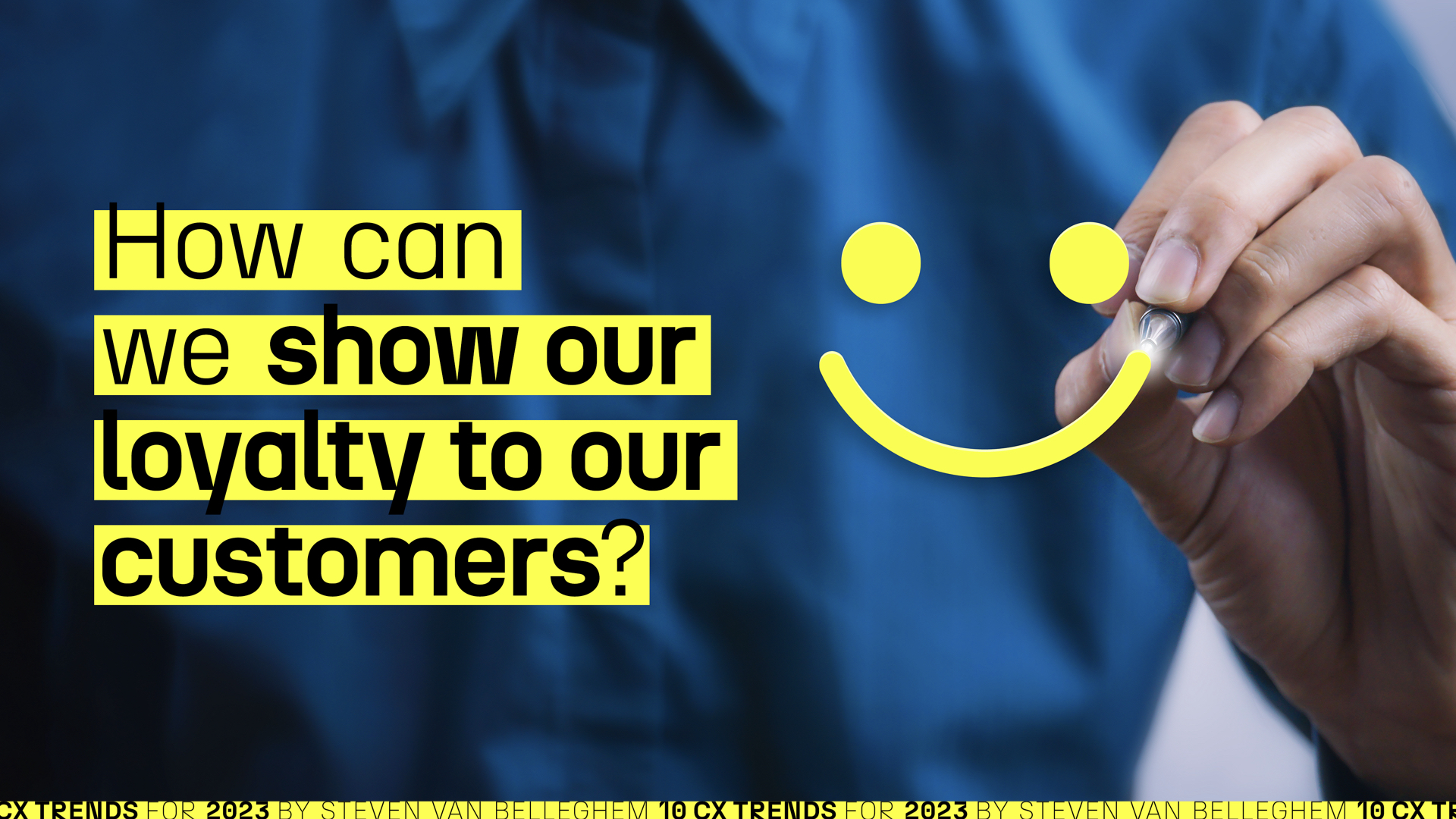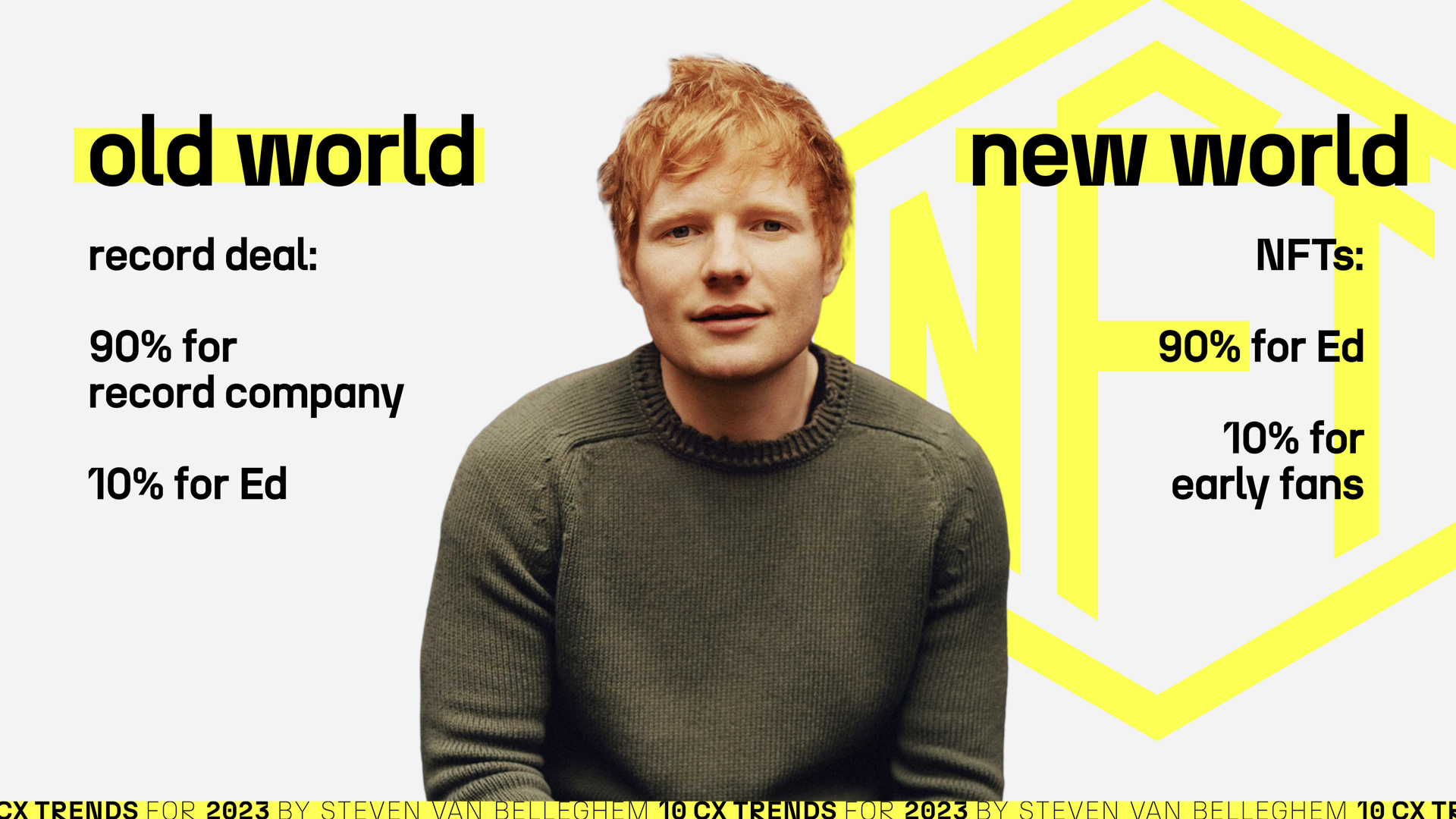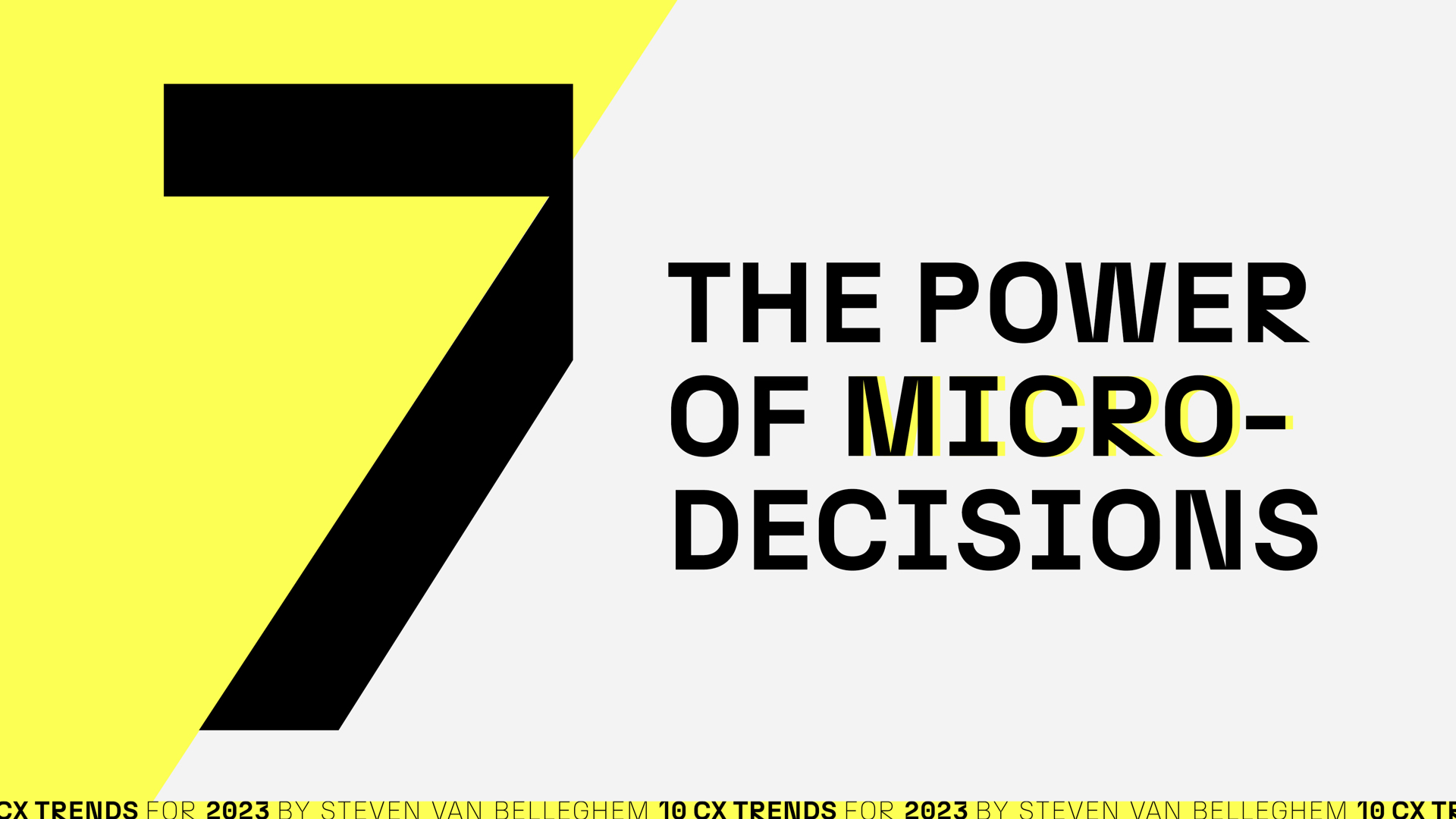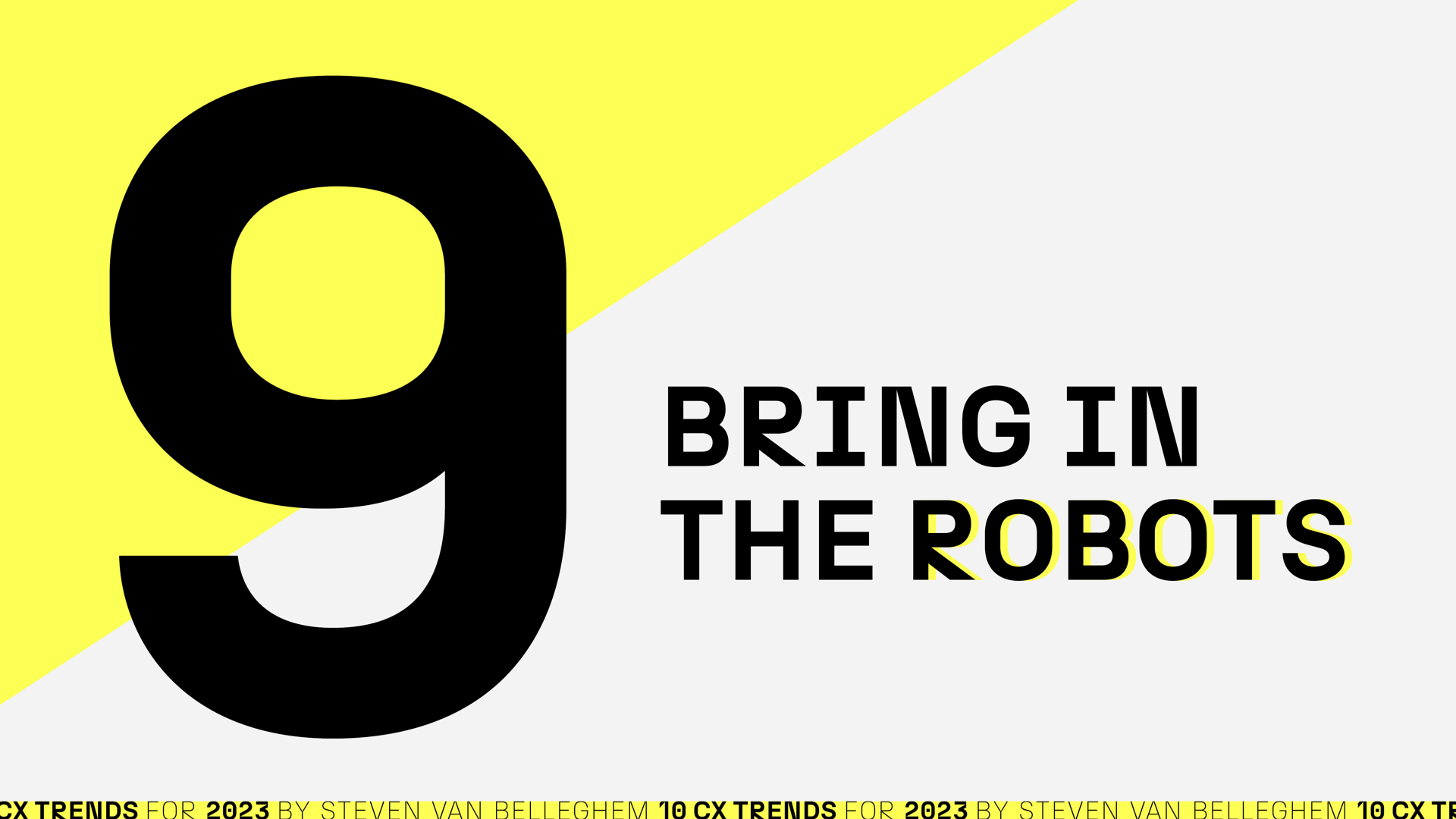10 Customer Experience for 2023 (and beyond)
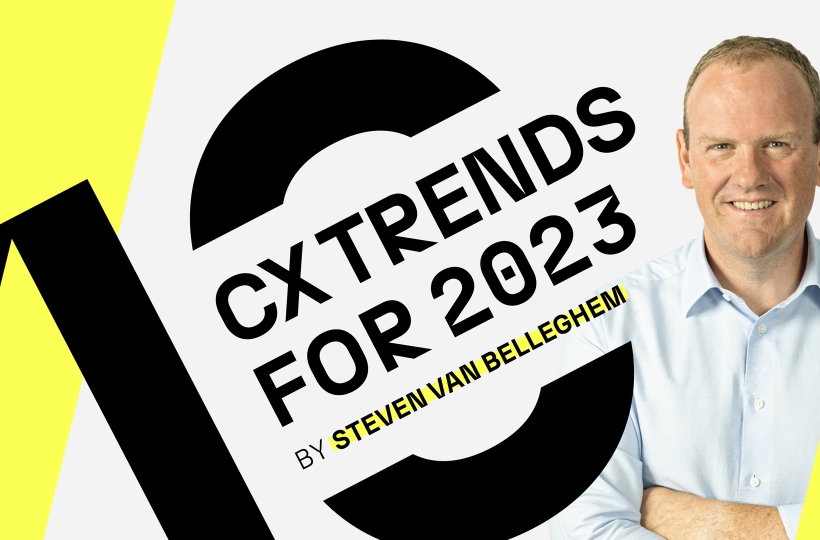
Positivity with impact
When it’s clouded, people long for a blue sky and a bright sun. That goes for your customers, too. Yes, companies are facing hard times, but it is not up to your customers to care and forgive you for any suboptimal CX experience. To be blunt, it is certainly not their problem that you had to cut costs because your energy bill is 10 times as high as last year’s. Their energy bill is 10 times as high too. You are not unique in that matter. In fact, I really believe that it is up to you to help them feel better. That will be a Big differentiator in these coming months and years, as long as this economic downturn lasts: CX that puts a smile on people’s faces and makes them feel good. CX that has a true emotional impact.
And I think that what I call the “Top Gun effect” falls beautifully in that last category: creating a no nonsense, simple but really enjoyable and pure 100% feel good experience for customers. Now more than ever, having all experienced pretty challenging times since the pandemic, people are really craving this type of positiveness. Apart from other obvious strategic reasons (like diversifying and membership models), this possibility to offer feel good and fun to customers is probably why we see an increased number of serious or commodity companies like Walmart, AT&T, T-Mobile or Verizon experimenting with streaming services, for instance.
The rise of empowered CX
A trend that really ties in with this top gun effect, is that the days that manipulation of customers was acceptable are coming to an end. People are increasingly aware how they are being nudged and pushed in certain directions that may not exactly be in their best interest. And they don’t like it. More and more, they expect brands to trust them to make their own decisions. They want brands to empower them to do what they want when they want it, not tell them what to do. It’s about creating the perfect conditions to empower your customers. And about being fully transparent and open about that. That is how you build a long term and positive relationship with customers.
A perfect example of this empowerment is Everytable, which wants “to make sure that every American citizen has access to a healthy meal at a low cost”. In the US, lower income neighborhoods are usually teeming with really cheap but unhealthy fast food places and Everytable wants to offer a healthy and just as affordable alternative to that: the price of their lunch meal is always lower than the price of a Big Mac menu. And I think that that’s brilliant: they are empowering customers to become healthier by making that affordable, instead of investing all of their budget in marketing to manipulate them.
Bright CX
I believe that those who will come out of these difficult times as winners, are the brands that understand that CX – not costs – should lie at the heart of their strategy. And that it is perfectly possible to improve CX with few extra costs and sometimes by even lowering costs at the same time. I call that bright CX, because it’s smart and it makes the future brighter.
There are many methods to accomplish that, often by increasing efficiency, human effort or by just being creative. One of the examples I love to give is “just say more “yes” to your customers”. We all know that it is easy and acceptable to say “no” to reasonable questions from customers that aren’t standard practice. But you will have failed at making them happy, while you could have easily done so with a little extra effort and (almost) no extra budget. So when they ask to come get their fixed car in your garage 5 minutes after closing time, try to say “yes” next time.
Maybe a less obvious one, but speeding up the approval process by empowering employees, can have the same effect: if a shop assistant needs to ask the manager when a customer has a question, this is more expensive (time is money, right) ànd less customer friendly at the same time. Empower them and save time, money and increase customer happiness.
Though offering a seamless digital experience may seem more expensive in the short term – you have to invest money first to get there, of course – it will definitely save costs in the long term. Just think about the all the costs that Tesla saves by allowing customers to basically find all the info and prices online. Also, they can order their car their without needing to talk to (sometimes pushy) sales assistants. Tesla saves money, and the customer is happier.
It may seem like a contradiction, but saving money while you boost CX is possible. And in these difficult times, Bright CX is going to be a hugely important trend.
A growing influence sphere
What we’re also starting to see in customer experience is that the influence zone of a brand is increasing. Traditionally, people were really focused to act within the influence sphere of their own company and their own industry. At the same time, they were just monitoring what was happening on a macro kind of level. Today, you see that this is completely changing, especially after some of this year’s geopolitical events: the influence zone is dramatically broadening. And you see that organizations really act on all of these levels, not just monitoring some of them. An example is McDonalds leaving Russia when the war started.
This is a very interesting and strong evolution where brands want to have that voice in the world. They want to have an opinion. They want to act upon it and some make really bold choices in that journey. And this is something that is more and more on the table in board rooms. But it’s more and more linked to the customer experience as well because an increased amount of customers expect organizations to become part of the solution. They want them to find that untapped potential to have an influence on every part of society; beyond their own company and industry. So the influence zone of organizations is increasing rapidly and it’s valued more than ever by the customer.
Re-Inventing Customer Loyalty
When everyone’s budgets are under pressure, fostering a long term relationship with customers through subscription models could be an interesting approach in the coming years. And you see this type of model surfacing more and more. One of my favorite examples is probably apparel retailer Lululemon. It started out by selling yoga wear but later expanded into athletic wear, lifestyle apparel, accessories, and personal care products. The fantastic part is that their purpose goes beyond selling products: they want to make sure that people can become healthier and look great in multiple ways. And so, on top of their fashion and their stores, they acquired tech startup Mirror which allows customers to do a workout from the comfort of their own home, with a personal trainer and feedback from a mirror.
The reason behind that acquisition is that they want to launch a membership program – for about 128 dollars a year – offering a limited amount of free clothes (almost compensating for the 128 dollars per year), events and fitness classes. That way, customers are not just becoming loyal just to Lululemon, they are also becoming part of the lifestyle community that the company is enabling. And that is a whole new type of loyalty and long term customer relationship that’s perfect for these difficult times.
And you see it happening all around: Disney, for instance, is exploring a membership program in the style of Amazon Prime, offering various exclusive perks and discounts. As is Walmart. But it’s not just a B2C thing, B2B companies are also investigating this model to re-invent customer loyalty. Philips, for instance, is offering Light-as-a-Service while Rolls-Royce’s aerospace division service TotalCare offers a jet engine-as-a-service.
Helping customers make (not just save) money
Another fantastic way of helping, empowering and making customers feel good in turbulent times, is by helping them to make money. And I think that NFTs may have a huge role to play here in the coming years. Example: a talented singer with a large TikTok following does not succeed in finding a record deal, and decides to create an NFT album. That could mean that the early fans could get access to part of the revenues through a smart contract in this NFT. In the old music industry, 90% of the value went to the record company and only 10% to the creative talent. With NFTs that 10% could go to fans – very welcome in these hard times – and customers while the artist gets 90%. If the brand wins, the customer wins. I really love that.
The metaverse, too, seems to be offering a version of that, with the creator economy. Roblox, for instance, is not just a metaverse game that people can play, it is also a very big creator community: with very simple tools, it empowers users to build their own games and game collateral and then make money from that. Or another example: a friend of mine once asked several estate agents to draw up estimates for her house – one that was in need of an extensive renovation – as she was planning to sell. Most offered the same services and about the same prices. But one of them offered an additional service: they worked with a contractor, who drew up plans and a budget for what the house would look like when renovated, and whom the potential buyers could then hire to fix the house. This was the only estate agent that seriously tried to help her make more money from her house sale, because they would show the buyer a vision of what was possible and why that house was worth that.
The Power of Micro decisions
When it comes to fostering great CX in difficult times, I believe that the micro decisions of great leaders will have a very important role to play. CX is the responsibility of the entire organization, not just of some customer-facing departments. Every decision that is made, up to accounting, HR and supply chain should be made with the best interests of customers at heart. But one of the biggest challenges here, is that employees do not really believe that their leaders want to put CX at the heart of everything. Because, while they may be saying different things, most of them act as if revenue, efficiency and ROI are much more important. That is because, in most organizations, there is still a very Big disconnect between saying that “CX is everything” and organizing their KPIs, reward systems and decisions around that. In spite of their lofty PPTs and keynotes, most leaders make micro decisions that point to something very different.
So, I would advise all leaders, to make micro decisions that show how they really mean that CX really stands at the heart of all their decisions. Just to give an example, in a company where one of the KPIs for customer service is the time to close a conversation, than that is a decision that proves that efficiency is held in higher value than the customer’s wellbeing. But let’s say that an employee spends 25 minutes more on a call with a customer with a very hard to solve problem, actually solving that and ending up with an extremely relieved and happy customer, who maybe shares that on the socials. A manager has two choices, then. They could say something like “Well done, but please try to keep your calls to the minimum.” Or they could really celebrate that employee and show him as an example to the rest, without any mention of the time. These are the micro decisions that prove if CX is seen as essential in an organization, or not.
Tik-Tok-Ise your experience
While we are waiting for Web3 to be built, the current Web2 giants are still pretty much ruling the world. And there is one of the newer kids, TikTok that is currently being copied by all of the other, even companies that might seem less obvious at first sight. Of course, Facebook, Instagram and Snap have been furiously “inspired” by TikTok for the past years, but now Amazon, too, has been testing a TikTok-like feature where user can post and share pictures and short videos and purchase products to increase user engagement. While Google – having disclosed a while ago that younger people had begun turning to services, like TikTok and Instagram, to perform web searches – is revamping the traditional Google Search experience to “make using search a more visual experience, highlighting maps snippets, imagery and even video in new ways”.
For those who want to understand the interface of the future, I’d advise to look beyond the enhanced AR and VR interfaces (for which it is still too soon), and re-evaluate their ‘portals’ to the customers by comparing it to the TikTok experience. Because at this very moment, a whole new generation is getting used to working and playing with TikTok’s interface. For the past 10 years I have been advising my business audience to be “fast, easy, and fun”. And TikTok’s interface and experience truly is all of these things. On top of that, it offers intense personalization because of a superefficient algorithm. I’m convinced that if we don’t change our interfaces rapidly in – let’s say in the next two to three years – we are going to miss out on an entire generation that is now being trained to use interfaces in a completely different way. I don’t see this as a threat, though. I see this as a fantastic opportunity to renew how we think about our products, services and our relations with our customers.
Bring in the robots
One of the ways that CX increasing, friction decreasing and (long term) cost cutting can go hand in hand is by automating and using robots. But another huge trend for the coming years in robotics, AI and virtual humans is that they will simply become a necessity in many areas where companies can just no longer find enough employees.
I’m talking about bottleneck professions like call center employee, waiters, masons, cleaners, food deliverers, truck drivers and even cooks. Those who are still performing these jobs are increasingly under pressure: they sometimes need to perform the job of multiple people at the same time because their organization is simply so hugely understaffed. A great example of how robots could help solve this problem are the Coco bots that pick up food at restaurants and deliver it to the customer in 15 minutes or less. The Italian deli and bakery Bay Cities in Los Angeles, for instance, gets 50-60 orders per hour at peak, which Coco allows it to handle without disruption to their kitchen flow and shelf wait time. That’s more (cost) efficient for the restaurant ànd a better CX for the customer.
Ambient intelligence reborn
The term ambient intelligence dates way back from the 1990s. It was developed by Eli Zelkha and his team at Palo Alto Ventures. It “would allow devices to work in concert to support people in carrying out their everyday life activities, tasks and rituals in an intuitive way using information and intelligence that is hidden in the network connecting these devices.” The term disappeared for a while, but now Amazon seems to have dug it back up again and I think it shows a very interesting vision for the future.
Amazon has set itself the mission to develop a silent infrastructure of “ambient intelligence” weaving its products invisibly into its customers life so that it can help them at any moment, with any task. Its newly introduced Halo Rise, for instance, uses radar to monitor movements while people sleep, combining that data with information about their bedroom—temperature, humidity, and brightness—to measure the quality of their sleep.
As I read in Wired magazine, they see it as “the opposite of the metaverse: Instead of asking people to venture into an artificial virtual world, Amazon wants to weave its computing products into our homes and cars, to the point where the technology seems invisible, even as it switches on gadgets, alerts us to home intruders, and figures out what we want to watch or read next.” Or as Amazon’s hardware chief, Dave Limp explains it, “Our view isn’t that you start with the phone and emanate outwards. Instead you start with intelligent devices that are placed throughout the house or the car, that when they interact together, they act better. They’re always there.”
A really interesting step they are taking here is to move from language to intent, as Limp explained: “One of our long-term objectives is to get customers to talk to Alexa less. In 2020, about 20 percent of Alexa’s tasks were proactive, meaning that the system executed by predicting what the user wanted, not via voice command. By the next year, the percentage rose to a quarter of the system’s actions. Now, it’s approaching a third.”
10 CX Trends for 2023!
So these are my top trends for the coming months and years:
- Positivity with impact
- The rise of empowered CX
- Bright CX
- A growing influence sphere
- Re-Inventing Customer Loyalty
- Helping customers make (not just save) money
- The Power of Micro Decisions
- TikTok-ise your experience
- Bring in the robots
- Ambient Intelligence Reborn
Here is the video with the long description about these 10 Customer Experience trends for 2023
What are your favorite trends in CX? Let me know over the socials!
